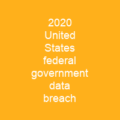
The Dance of Data
Imagine you’re dancing in a crowded room; everyone is watching your every move. That’s what it feels like when you share personal data online. Various types of personal information come under privacy concerns, including cable television (control over what information is revealed), educational records (like the National Pupil Database in the UK), and financial details (sensitive transactions and account information).
Technologies to Address Privacy Protection
Policy appliances for communication and enforcement, standards such as P3P, XACML, EPAL, and WS-Privacy, are like the choreography that helps dancers stay in sync. These technologies aim to protect your privacy by setting rules and guidelines on how data should be handled.
The Internet: A Growing Concern
Have you ever wondered who can see what you do online? The internet has become a growing concern for controlling what information is revealed about oneself and who can access it. These concerns include whether email can be stored or read by third parties without consent, or whether third parties can continue to track the websites that someone visited.
AI: A Double-Edged Sword
The advent of various search engines and data mining created a capability for data about individuals to be collected and combined from a variety of sources easily. AI facilitated creating inferential information about individuals and groups based on such enormous amounts of collected data, transforming the information economy. It’s like having a giant puzzle where every piece is someone’s personal detail, and AI can predict what you might do next just by looking at those pieces.
The FTC: Guidelines for Privacy
The Federal Trade Commission (FTC) has provided guidelines called Fair Information Practice Principles. But they have been critiqued for their insufficiency in the context of AI-enabled inferential information. It’s like having a map, but the territory keeps changing faster than you can draw it.
Protecting Your Privacy
To protect this information, emails can be encrypted and browsing can be done traceless via anonymizers or mix networks like I2P and Tor. Social networking sites pose additional privacy challenges, as people may be tagged in photos or have valuable information exposed without their consent. It’s like wearing a mask to hide your identity when you’re out in public, but sometimes even that isn’t enough.
Cookies and GDPR
Cookies are used on websites to track user behavior, but they usually do not mention what the data being retrieved is. The General Data Protection Regulation (GDPR) forces websites to visibly disclose their information privacy practices, but its effectiveness is controversial. It’s like having a friend who promises to keep your secrets but might tell them anyway.
The Future of Privacy
Apps like Instagram and Facebook collect user data for a personalized app experience, but they also track user activity on other apps, jeopardizing users’ privacy and data. Location tracking capabilities of mobile devices are advancing, with problems related to user privacy arising due to the sensitive nature of location data. It’s like having a map that follows you everywhere you go, even when you don’t want it to.
Medical Privacy
Medical privacy has three categories: informational (control over personal info), physical (physical inaccessibility), and psychological (respect for patients’ cultural beliefs). Physicians have standards for confidentiality, and laws like HIPAA protect patient information. Political privacy is a concern since ancient times; the secret ballot is considered a basic right of citizenship. It’s like having a private room where you can share your deepest thoughts without fear of judgment or intrusion.
Data Privacy Issues
Laws and regulations regarding privacy vary globally, with the Safe Harbor program regulating data transfer between the US and EU. The European Commission has set up the “Working party on the Protection of Individuals with regard to the Processing of Personal Data” to advise on the level of protection in Europe and third countries. It’s like having a bridge that connects two different worlds, but sometimes it can be shaky or unstable.
The Safe Harbor Program
The Safe Harbor Principles were negotiated between EU representatives and US officials, providing a voluntary program for US organizations to comply with data protection standards. However, this approach remains controversial among European privacy regulators. Under the Safe Harbor, personal information can be sent from the EEA to US organizations that have self-assessed their compliance with standards, without violating Article 25 or its EU national equivalents. It’s like having a handshake agreement between two countries, but sometimes it doesn’t hold up under scrutiny.
Tensions Between the US and EU
In recent years, tensions between the US and EU have arisen due to differences in data protection levels, particularly regarding Passenger Name Records (PNR). The US has signed bilateral agreements with some countries without consulting Brussels first, causing concerns among EU officials. It’s like having a neighbor who keeps making noise late at night, but you can’t do anything about it because they’re not following the rules.
In conclusion, information privacy is a complex and ever-evolving field. As technology advances, so too must our understanding of how to protect personal data in an increasingly interconnected world. The challenge lies in finding the right balance between innovation and security, ensuring that every step we take online respects the delicate dance of privacy.
You want to know more about Information privacy?
This page is based on the article Information privacy published in Wikipedia (retrieved on November 23, 2024) and was automatically summarized using artificial intelligence.







